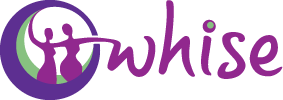The 12 Victorian Women’s Health Services met on Tuesday 13 September to mark progress of work for gender equality and make a call for all parties and government to sustain the commitments of preventing family violence, of continuing to invest in intersectional gender equity and, to drive change in our health system so it is equitable for all.
Joined by the Minister for Health, Mary-Anne Thomas, parliamentarians and key stakeholders, the event at the Windsor Hotel showcased the current work of the only part of the public health structure that applies a gender lens to services and programs delivered by our health and social services system and reflected on the history of the women’s health movement in Victoria.
“The last 30 to 40 years of work across the Victorian women’s health movement has been transformational, but we can’t stop now,” said Kit McMahon, WHISE CEO.
“While one in four women are still experiencing intimate partner violence since they were 15, when over 36% of Victorian women have been diagnosed with depression and anxiety and when one in two women experience sexual harassment, we must keep sustaining and driving for change.
“This event sought to showcase not only the work that the Women’s Health Services do, but the reality that it takes all parts of our public health policy and system working in collaboration and in partnership to really achieve an equitable health system and community.”
The 12 Victorian Women’s Health Services comprise of:
- Three statewide services – Women’s Health Victoria, Women with Disabilities Victoria and Multicultural Centre for Women’s Health
- Four metro services – Women’s Health in the North, Women’s Health East, Women’s Health in the South East and GenWest
- Five rural services – Women’s Health and Wellbeing Barwon South West, Women’s Health Grampians, Womens Health Lodden Mallee, Women’s Health Goulburn North East and Gippsland Women’s Health











